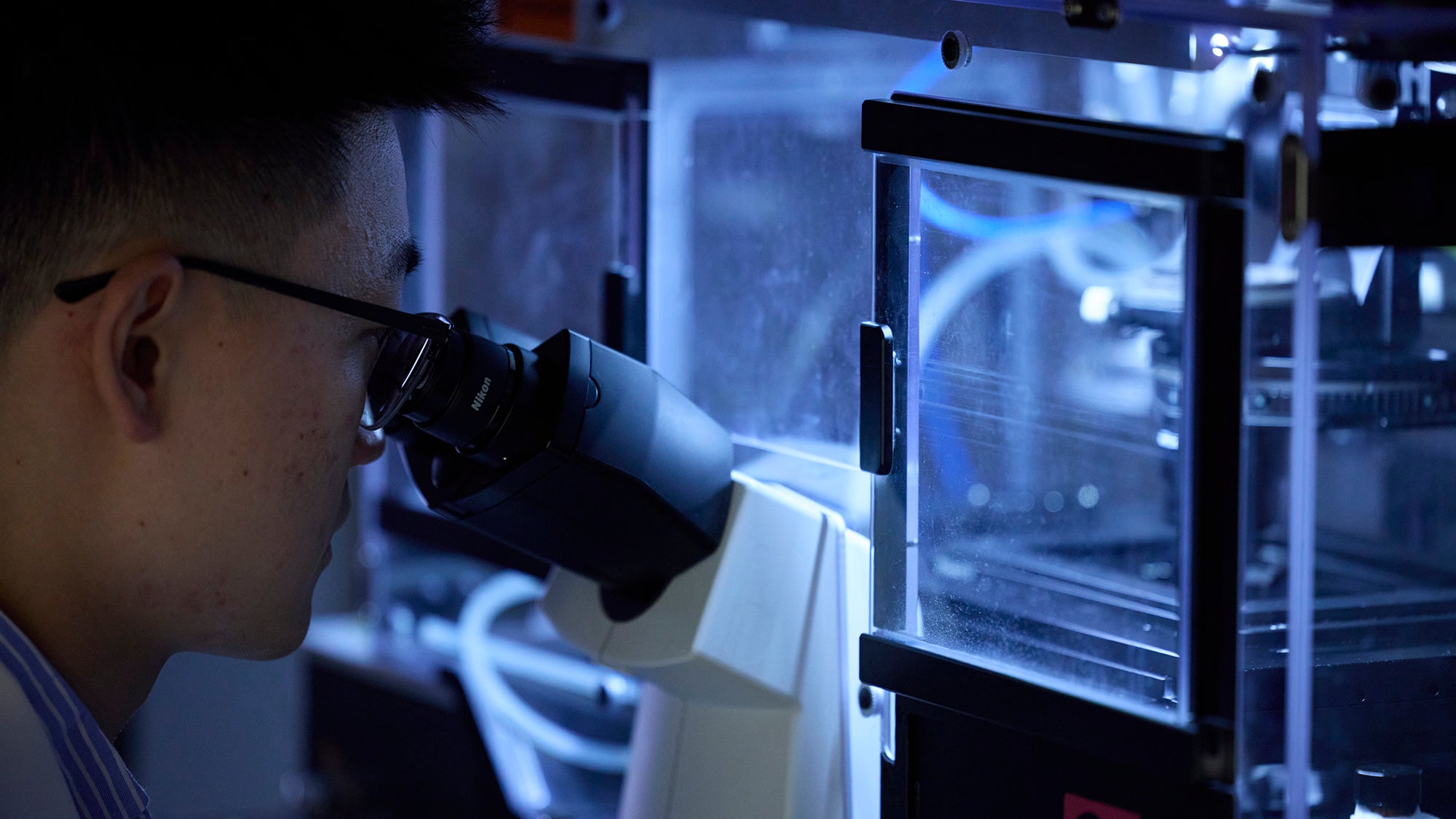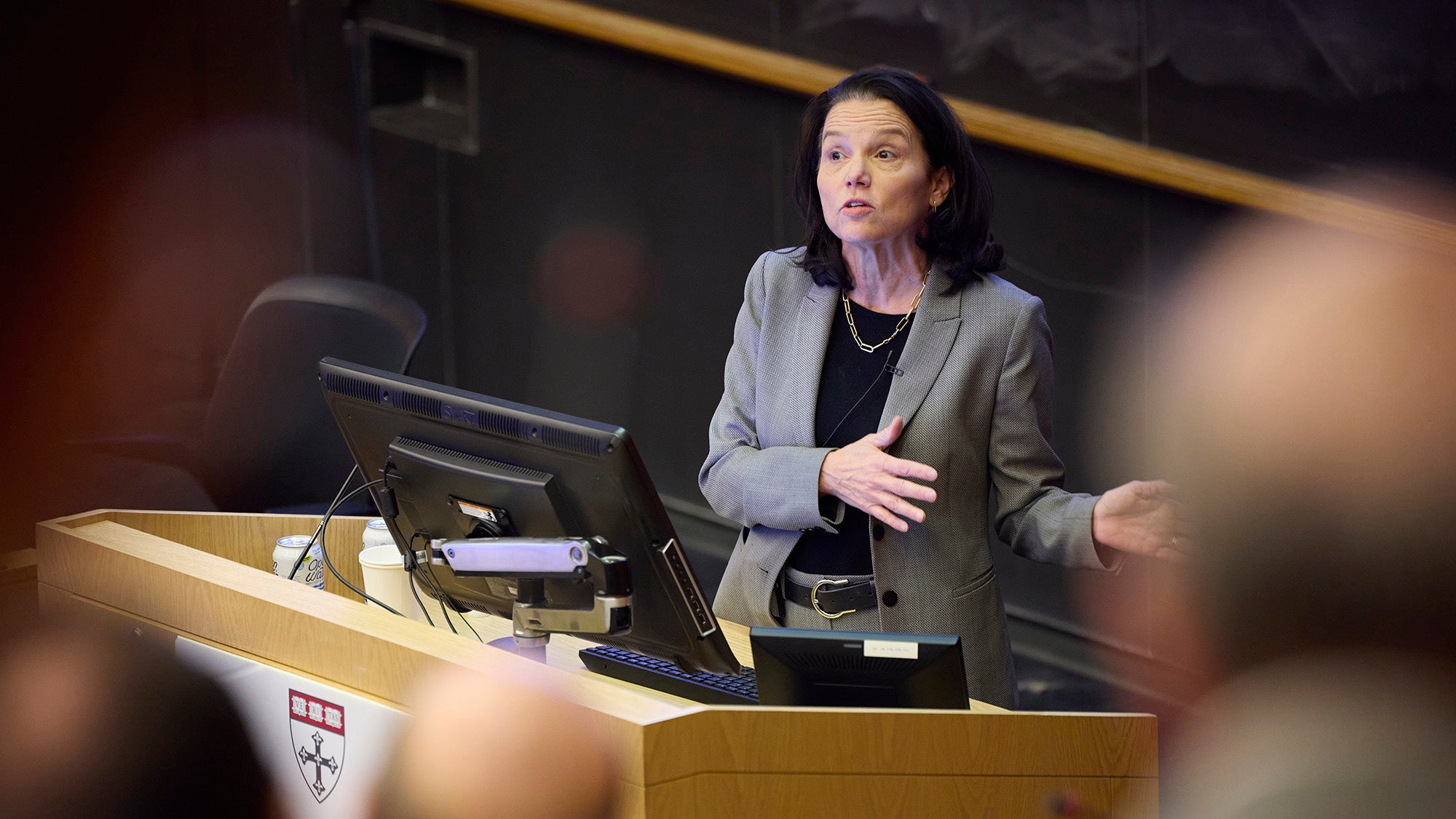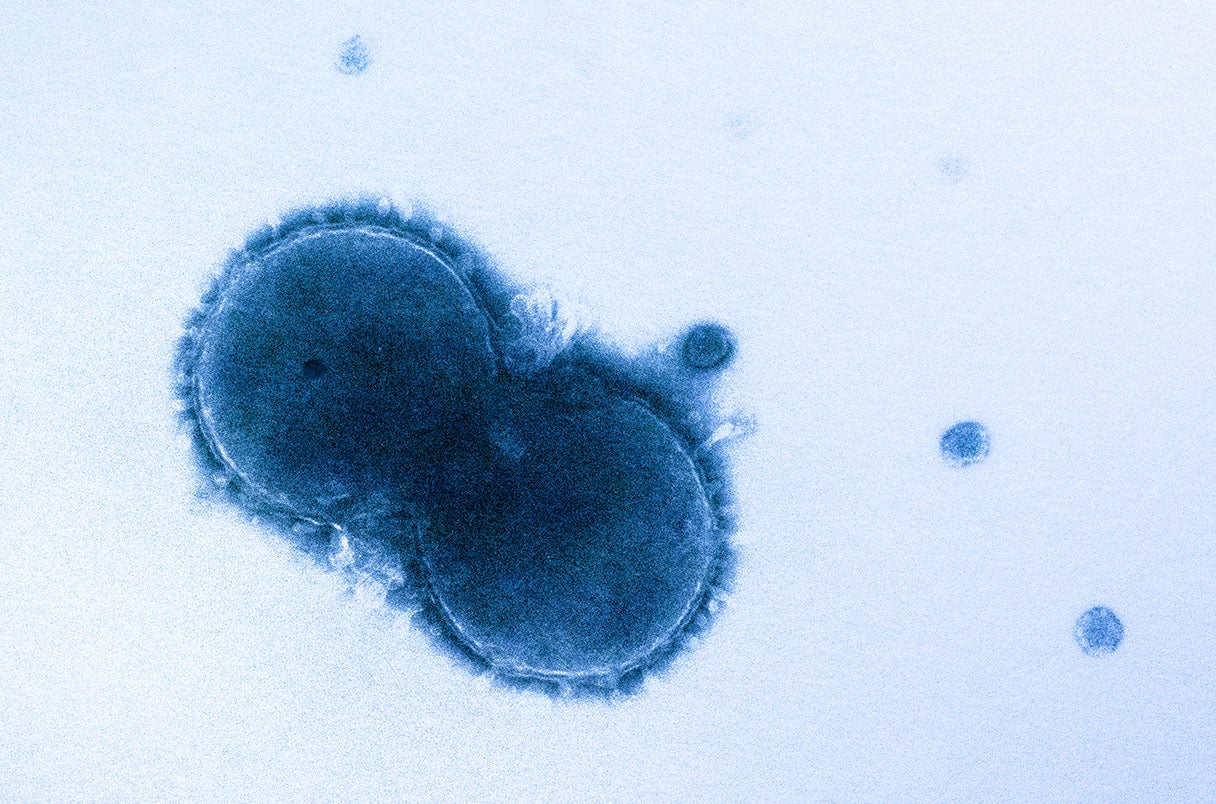Federal funding drives groundbreaking research at Harvard Chan School

For more than a century, Harvard Chan faculty have conducted groundbreaking research that has led directly to vaccines, treatments, policies, and programs that have saved lives by the millions, in the U.S. and around the world.
A National Institutes of Health (NIH) plan to impose deep and sudden cuts on an important source of research funding will have a “disastrous” impact on this research, according to a court declaration filed by John Shaw, Harvard University’s vice provost for research.
Over the coming weeks, we will feature high-impact research from Harvard Chan School faculty. Here are three recent examples, all powered by NIH funding:
Edging closer to a cure for multiple sclerosis
“To put it simply, this study could have not started nor finished without funding from the NIH.”
–Alberto Ascherio, professor of epidemiology and nutrition
In 2022, a team of scientists at Harvard Chan School made a groundbreaking discovery. They found that multiple sclerosis (MS), a disease that affects about 2.9 million people worldwide and for which there is currently no definitive cure, is likely caused by infection with the Epstein-Barr virus (EBV).
“The discovery revolutionized the field,” said Ascherio, professor of epidemiology and nutrition at the School and senior author of the study. “Because of it, research on MS at several pharma companies and academic institutions is now focused on ways to prevent and treat MS by targeting EBV.”
The study, which followed 10 million young people in the U.S. military over a 20-year period, was made possible by funding from several institutions, including the NIH.
Ascherio is currently pursuing similar breakthroughs for the prevention and treatment of other neurodegenerative diseases, such as amyotrophic lateral sclerosis (ALS), Parkinson’s disease, and Alzheimer’s disease. As he put it: “Over the past 25 years we have built the neuroepidemiology equivalent of the Webb Space telescope—we now need funding to launch it!”
Strengthening the link between air pollution and dementia
“Our work could help drive policy aimed at reducing fine particulate pollution which, in turn, could lower people’s risk of dementia.”
–Marc Weisskopf, Cecil K. and Philip Drinker Professor of Environmental Epidemiology and Physiology and director of the Harvard Chan NIEHS Center for Environmental Health
Harvard Chan School’s Marc Weisskopf and colleagues found strong evidence of the link between air pollution and dementia in a 2023 study.
The research was supported by the NIH’s National Institute of Environmental Health Sciences, which provides core funding for the center Weisskopf directs—the Harvard Chan National Institute of Environmental Health Sciences (NIEHS) Center for Environmental Health.
Scanning 10 years’ worth of prior studies that had looked at the link between ambient air pollution and dementia, Weisskopf and colleagues found consistent evidence of an association between fine particulate pollution (PM2.5) and dementia, even when annual exposure was lower than EPA limits at the time. They noted that although air pollution’s estimated association with dementia risk was smaller than that of other risk factors, such as smoking, the population-level health implications could still be substantial because so many people in the U.S. are exposed to air pollution.
“Our findings suggested that lowering PM2.5 on a nationwide scale could avert or at least delay a lot of dementia cases,” Weisskopf said. “And even delaying dementia by a few years could have tremendous financial, societal, and quality of life benefits.”
In the future, Weisskopf hopes to pinpoint which sources of PM2.5—whether from, for example, vehicle tailpipes, coal combustion, wildfires, or agricultural emissions—are most dangerous when it comes to dementia. He is also looking at how early life exposures to metals and other toxins may be related to later-life cognitive decline and dementia.
“Better understanding the pathways that lead to dementia can lead not only to prevention efforts, but also to new therapeutics,” said Weisskopf. “If funding gets shut down, all sorts of new advances in what leads to dementia—which is a massive burden on our society—would be substantially slowed.”
Gut microbiome study points to possibility of dietary interventions for mental health disorders
“Our work provides evidence for specific aspects of the microbiome and diet that could improve mental health.”
–Karestan Koenen, professor of psychiatric epidemiology
People with post-traumatic stress disorder (PTSD) may be able to alleviate their symptoms by changing their diet, according to a 2023 study led by researchers from Harvard Chan School and Brigham and Women’s Hospital (BWH). Looking at health and diet data—including microbial DNA samples—from 191 women, they found that those who adhered to a Mediterranean diet experienced fewer PTSD symptoms. In particular, they found that eating more plant-based foods and less red or processed meat was associated with fewer symptoms.
Koenen, an expert in trauma and PTSD and the leader of an initiative at the Broad Institute of MIT and Harvard exploring the biology of trauma, was excited to see such promising results. She said the work has stimulated broader interest among scientists in the microbiome and the use of dietary interventions for mental health disorders. It’s also sparked additional opportunities for Koenen, including a larger study she’s co-leading aimed at developing probiotic interventions for PTSD, funded by the Department of Defense.
Funding from the NIH was crucial for the Mediterranean diet study, Koenen said. “It leveraged data from the Nurses Health Study II cohort, which has been funded by multiple institutes at NIH for decades.” She also obtained funding from the National Institute of Mental Health to add data on trauma and mental health, including PTSD. Koenen said, “These data and this study would not exist without NIH funding.”

What is an “indirect” research cost?
For decades, the federal government has partnered with universities across the U.S. to advance public health and biomedical research.
Scientists apply to federal agencies such as the NIH for funding to support the direct costs of their research, including supplies, travel, and a portion of their own salaries and the salaries of others working on the project.
In addition, universities negotiate reimbursement rates for “facilities and administrative” costs, also known as F&A or “indirect” costs, to partially cover the institutional expense of supporting research. F&A costs include building and maintaining lab space, supporting high-powered computing resources, and personnel required to support essential administrative and regulatory compliance work.
Harvard Chan School negotiates its F&A reimbursement rate with the Department of Health and Human Services periodically. It’s a rigorous process; federal officials scrutinize the School’s actual expenditures in support of federally funded research, from electric bills to staff salaries.
Harvard Chan School is currently working under a provisional rate of 54.7% for organized research conducted on campus, meaning that for every $1,000 of federal grant money a faculty member receives for a qualified, on-campus research project, the School also receives $547 to cover facilities and administrative costs.
That rate does not begin to cover all F&A costs, Dean Andrea Baccarelli said in his recent State of the School address. The School draws on other revenue to subsidize research “because we are not in the business of making money,” he said. “Our business is to further our mission—to improve health around the world.”
But Baccarelli said the School does not have the revenue to make up for a steep drop in NIH funding. The agency has announced plans to slash F&A rates to a flat rate of 15% nationwide.
The results could be devastating to scientific progress in health and medicine, Harvard President Alan Garber wrote in a letter to the community: “The discovery of new treatments would slow, opportunities to train the next generation of scientific leaders would shrink, and our nation’s science and engineering prowess would be severely compromised.”


